Copper is a commonly used material with good conductivity, thermal conductivity, and processability. In CNC machining, there are various types of copper materials to choose from, each with unique characteristics and applications
In this article, we will introduce six copper materials suitable for CNC machining, explore their characteristics and applications, and help you make wise decisions when choosing the right material.
CNC macining: copper material
Copper CNC machining is a method of precise cutting and machining of copper materials using computer numerical control technology. Through CNC machine tools and suitable cutting tools, copper materials can be finely carved, drilled, milled, and other operations to achieve the desired shape and size. Copper CNC machining can provide high-precision and high-efficiency machining processes, helping manufacturers produce copper parts and products that meet requirements.

6 types of copper materials suitable for CNC machining
This chapter will introduce six copper materials suitable for CNC machining, explore their characteristics, advantages, and applications in the manufacturing process. Whether manufacturing electronic components, Machine element or fine decorations, these copper materials show excellent performance and diversified application potential. By understanding these copper materials, you will be able to choose the most suitable material for your project needs, achieving precise and high-quality CNC machining.
1.Pure copper
Pure copper has excellent conductivity and thermal conductivity, making it the preferred material for many electronic components, contactors, and wires. It can be used to manufacture various precision components.
Physical and chemical characteristics of different pure copper grades
Table: Pure Copper Grades, Physical Properties, and Chemical Characteristics
| Grade | Density (g/cm³) | Melting Point (°C) | Electrical Conductivity (%IACS) | Thermal Conductivity (W/(m·K)) | Copper Content (%) | Oxygen Content (%) | Phosphorus Content (%) |
|---|---|---|---|---|---|---|---|
| C10100 | 8.94 | 1083 | 101 | 398 | 99.99 | ≤ 0.001 | ≤ 0.001 |
| C10200 | 8.94 | 1083 | 101 | 398 | 99.95 | ≤ 0.001 | ≤ 0.001 |
| C11000 | 8.89 | 1084 | 100 | 385 | 99.90 | ≤ 0.001 | ≤ 0.001 |
| C12000 | 8.92 | 1084 | 100 | 385 | 99.90 | ≤ 0.001 | – |
| C12200 | 8.92 | 1084 | 100 | 385 | 99.90 | ≤ 0.001 | – |
| C14200 | 8.87 | 1083 | 101 | 398 | 99.50 | ≤ 0.001 | ≤ 0.001 |
| C14500 | 8.75 | 1083 | 45 | 205 | 99.50 | – | – |
| C14700 | 8.83 | 1083 | 52 | 280 | 99.50 | – | – |
advantage
1.Excellent conductivity
2.Excellent thermal conductivity
3.Good processability
4.High strength and hardness
5.Good corrosion resistance
6.Antibacterial performance
7.High reliability and durability
8.Renewable and recyclable
9.High temperature stability
shortcoming
1.Easy to oxidize
2.Lower strength
3.Higher costs
4.Easy to wear and scratches
5.High thermal conductivity, not suitable for applications that require insulation
Application industry
1.The plumbing and heating industry: water pipe joints, valves, fittings, and pipe connections
2.Electronics and electrical industry: plugs and sockets, electrical connectors, wire and cable connectors
3.Automotive manufacturing industry: cooling system parts, fuel system parts, brake system parts
4.Construction and decoration industry: door handles and handles, window accessories, interior decoration hardware
5.Musical instrument manufacturing industry: Brass instrument, Percussion instrument parts, musical instrument accessories
6.Precision machinery manufacturing industry: nuts and bolts, bearings and bushings, gears and racks
7.Chemical and aerospace industries: valve and pipeline accessories, cooler and heat exchanger components, high-temperature corrosion-resistant parts
8.Transportation and shipbuilding industry: exhaust system parts, pipelines and pipe joints, ship accessories and decorative parts
2.brass
Brass is a product of copper and zinc alloying. Usually with an elegant appearance and fine surface quality, high-precision carving and machining can be achieved through CNC machining.
Physical and chemical characteristics of different brass grades
Table: Brass Grades, Physical Properties, and Chemical Characteristics
| Grade | Density (g/cm³) | Hardness (HV) | Young’s Modulus (GPa) | Thermal Conductivity (W/(m·K)) | Melting Point (°C) | Alloy Composition |
|---|---|---|---|---|---|---|
| C21000 | 8.53 | 80-120 | 120-135 | 109 | 900-940 | Copper (Cu): 92.0-94.0%, Zinc (Zn): 6.0-8.0% |
| C22000 | 8.53 | 80-120 | 120-135 | 109 | 890-940 | Copper (Cu): 90.0-94.0%, Zinc (Zn): 6.0-10.0% |
| C23000 | 8.53 | 90-140 | 120-135 | 109 | 890-940 | Copper (Cu): 85.0-88.0%, Zinc (Zn): 12.0-15.0% |
| C24000 | 8.53 | 100-150 | 110-120 | 109 | 890-940 | Copper (Cu): 78.5-81.5%, Zinc (Zn): 18.0-22.0% |
| C26000 | 8.53 | 110-160 | 110-120 | 109 | 890-940 | Copper (Cu): 68.5-71.5%, Zinc (Zn): 28.5-32.5% |
| C27000 | 8.53 | 120-170 | 110-120 | 109 | 880-940 | Copper (Cu): 63.0-68.5%, Zinc (Zn): 32.5-37.0% |
| C28000 | 8.53 | 130-180 | 110-120 | 109 | 880-940 | Copper (Cu): 58.0-63.0%, Zinc (Zn): 37.0-42.0% |
| C36000 | 8.53 | 100-250 | 100-120 | 109 | 895-925 | Copper (Cu): 60.0-63.0%, Zinc (Zn): 35.0-38.0%, Lead (Pb): 0.8-1.7% |
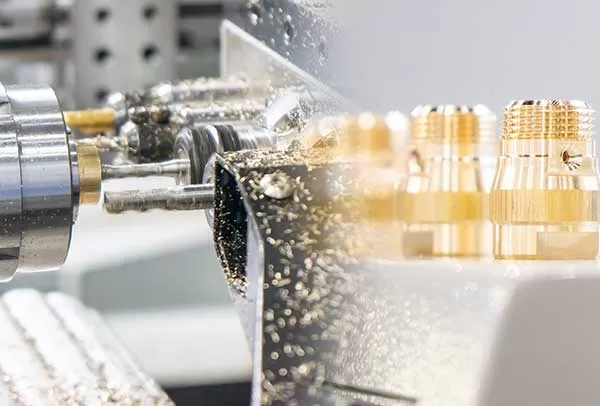
advantage
1.High strength and hardness
2.Good conductivity
3.Good wear resistance
4.Good impact resistance
5.Good heat resistance
6.Easy to weld and connect
7.Good corrosion resistance
8.Has good decorative performance
9.Good plasticity
shortcoming
1.Easy to corrode
2.High plasticity and easy deformation
3.Relatively low intensity
4.Heavier, not suitable for applications that require lightweight
Application industry
1.Medical and medical equipment parts: medical instrument accessories, medical equipment connectors, surgical instrument components
2.Military and defense parts: military vehicle parts, military equipment parts, ship and aircraft parts
3.Chemical and aerospace parts: valve and pipe fittings, cooler and heat exchanger components, aerospace parts
4.Mechanical and manufacturing parts: nuts and bolts, bearings and bushings, gears and racks
5.Automotive and transportation components: cooling system parts, fuel system parts, braking system parts
6.Electrical and electronic components: plugs and sockets, electrical connectors and terminals, circuit board bases and pins
3.Phosphor bronze
Phosphor bronze is an ideal choice for manufacturing bearings, gears, valves and other parts requiring high wear resistance. Through CNC machining, Phosphor bronze can be easily made into parts with various complex shapes
Physical and chemical characteristics of different Phosphor bronze grades
Table: Physical and Chemical Properties of Different Phosphor Bronze Grades
| Grade | Density (g/cm³) | Hardness (HB) | Young’s Modulus (GPa) | Thermal Conductivity (W/(m·K)) | Melting Point (°C) | Alloy Composition |
|---|---|---|---|---|---|---|
| C51000 | 8.83 | 95-145 | 119 | 75 | 930-1015 | Copper (Cu): 94.5-96.0%, Phosphorus (P): 0.02-0.35%, Tin (Sn): Balance |
| C51900 | 8.82 | 80-140 | 117 | 74 | 890-1015 | Copper (Cu): 94.5-96.5%, Phosphorus (P): 0.02-0.35%, Tin (Sn): 0.8-1.2% |
| C52100 | 8.92 | 80-135 | 119 | 75 | 890-1015 | Copper (Cu): 97.0-98.0%, Phosphorus (P): 0.02-0.35%, Tin (Sn): 0.8-1.2% |
| C53400 | 8.88 | 100-160 | 118 | 73 | 890-1015 | Copper (Cu): 93.5-95.0%, Phosphorus (P): 0.02-0.35%, Aluminum (Al): 0.5-1.5% |
| C54400 | 8.88 | 105-165 | 118 | 73 | 890-1015 | Copper (Cu): 90.0-92.0%, Phosphorus (P): 0.02-0.35%, Aluminum (Al): 4.0-5.0% |
| C62300 | 8.83 | 110-175 | 123 | 71 | 930-1015 | Copper (Cu): 80.0-85.0%, Phosphorus (P): 0.02-0.35%, Aluminum (Al): 8.0-9.0% |
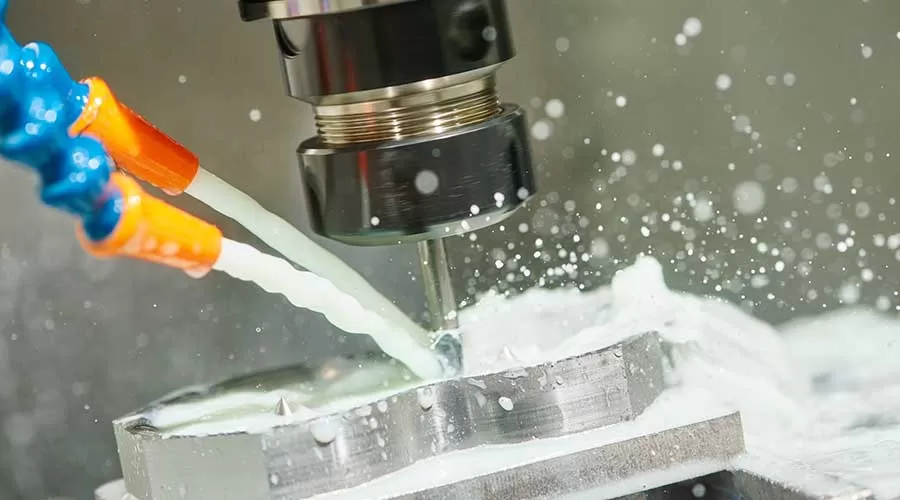
advantage
1.Good wear resistance
2.Good corrosion resistance
3.Excellent mechanical performance
4.Good thermal conductivity
5.Good fatigue resistance
6.High hardness
7.Good processability
8.Good friction resistance
9.Good high-temperature resistance
shortcoming
1.Poor conductivity
2.Not resistant to high-temperature oxidation
3.Difficult to weld and connect
4.Large coefficient of thermal expansion
5.Relatively few options and availability
Application industry
1.Mechanical manufacturing industry: bearings, gears, forgings
2.Aerospace industry: engine parts, bearings and connectors, bolts and nuts
3.Energy industry: gas valves, pipeline connectors, power generation equipment parts
4.Automation and control systems: electrical contactors, relays, switch components
5.Marine engineering: ship parts, marine equipment accessories, propellers
6.Construction and decoration industry: door handles and handles, interior decoration hardware, window accessories
7.Metallurgy and mining: ore crusher parts, fluid conveying equipment parts, copper ore beneficiation equipment parts
8.Automotive manufacturing industry: engine parts, brake system parts, and body structural parts
4.Aluminum bronze
Aluminum bronze has high strength and excellent corrosion resistance. Through CNC machining, aluminum bronze parts can be produced to meet the needs of various industrial fields, such as ship parts and ocean platform components.
Physical and chemical characteristics of different Aluminum bronze grades
Table: Physical and Chemical Properties of Different Aluminum Bronze Grades
| Grade | Density (g/cm³) | Hardness (HB) | Young’s Modulus (GPa) | Thermal Conductivity (W/(m·K)) | Melting Point (°C) | Alloy Composition |
|---|---|---|---|---|---|---|
| C61000 | 8.5-8.73 | 140-190 | 115 | 45-62 | 900-1010 | Copper (Cu): 79-81%, Aluminum (Al): 9-11%, Nickel (Ni): 2-4%, Tin (Sn): 0.2-1% |
| C61400 | 8.46-8.54 | 160-200 | 121 | 50-57 | 880-1010 | Copper (Cu): 83-86%, Aluminum (Al): 9-11%, Tin (Sn): 2-4%, Nickel (Ni): 0.5-1% |
| C62300 | 8.41-8.51 | 160-200 | 125 | 50-56 | 870-1010 | Copper (Cu): 78-82%, Aluminum (Al): 10-11%, Nickel (Ni): 2-3%, Tin (Sn): 1-2% |
| C63000 | 8.45-8.55 | 180-240 | 123 | 54-62 | 900-1010 | Copper (Cu): 80-84%, Aluminum (Al): 9-11%, Nickel (Ni): 4-5%, Tin (Sn): 1-2% |
| C64200 | 8.45-8.55 | 190-250 | 128 | 60-66 | 910-1010 | Copper (Cu): 81-85%, Aluminum (Al): 9-11%, Nickel (Ni): 4-5%, Tin (Sn): 1-2% |
| C64700 | 8.35-8.45 | 200-270 | 131 | 64-70 | 930-1010 | Copper (Cu): 83-87%, Aluminum (Al): 9-11%, Nickel (Ni): 4-5%, Tin (Sn): 1-2% |
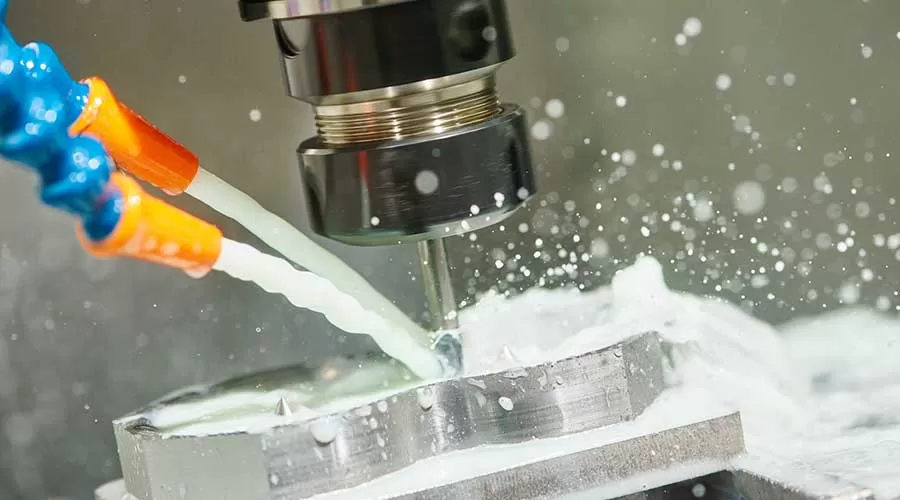
advantage
1.High strength
2.Good corrosion resistance
3.Good thermal conductivity
4.Good wear resistance
5.Good wear resistance
6.Strong corrosion resistance
7.Good corrosion resistance
8.High durability
shortcoming
1.Not resistant to acidic media
2.High thermal expansion coefficient
3.Low elastic modulus
4.Some applications are limited
Application industry
1.Aerospace industry: engine turbine blades, aircraft seat parts, aircraft landing gear parts
2.Automotive manufacturing industry: engine cylinder heads and blocks, brake discs and calipers, automotive suspension parts
3.Shipbuilding industry: ship propellers and propeller shafts, hull structural parts, marine valves and pipeline fittings
4.Mechanical manufacturing industry: gears and transmission shafts, molds and mold parts, grinding and cutting tools
5.Power industry: generator rotor and stator, transmission line connectors, power transformer parts
6.Petroleum and natural gas industry: oil drilling pipe fittings, valves and pipe joints, Oil platform structural parts
7.Chemical industry: chemical reactors and tanks, pumps and valves, pipelines and fittings
5.Tin bronze
Tin bronze has excellent wear resistance and corrosion resistance, and can be used to manufacture bearing rings, connectors, and turbine components. Through CNC machining, tin bronze can be easily made into complex parts.
Physical and chemical characteristics of different Tin bronze grades
Table: Physical and Chemical Properties of Different Tin Bronze Grades
| Grade | Density (g/cm³) | Hardness (HB) | Young’s Modulus (GPa) | Thermal Conductivity (W/(m·K)) | Melting Point (°C) | Alloy Composition |
|---|---|---|---|---|---|---|
| C90200 | 8.83 | 90-110 | 105 | 58.6 | 860 | Copper (Cu): 88-92%, Tin (Sn): 8-10%, Phosphorus (P): 0.05-0.35%, Antimony (Sb): 0.5% |
| C90700 | 8.8 | 75-85 | 100 | 54.3 | 885 | Copper (Cu): 89-91%, Tin (Sn): 6-8%, Phosphorus (P): 0.02-0.15%, Antimony (Sb): 2% |
| C90800 | 8.8 | 55-65 | 100 | 48.1 | 885 | Copper (Cu): 88-90%, Tin (Sn): 10-12%, Phosphorus (P): 0.01-0.15%, Antimony (Sb): 2% |
| C91000 | 8.8 | 70-80 | 105 | 48.1 | 870 | Copper (Cu): 85-89%, Tin (Sn): 9-11%, Phosphorus (P): 0.02-0.15%, Antimony (Sb): 2% |
| C91600 | 8.78 | 55-65 | 105 | 43.5 | 880 | Copper (Cu): 87-89%, Tin (Sn): 9-11%, Phosphorus (P): 0.02-0.15%, Antimony (Sb): 3% |
| C92200 | 8.75 | 85-95 | 105 | 55.6 | 890 | Copper (Cu): 87-89%, Tin (Sn): 9-11%, Phosphorus (P): 0.02-0.15%, Antimony (Sb): 2% |
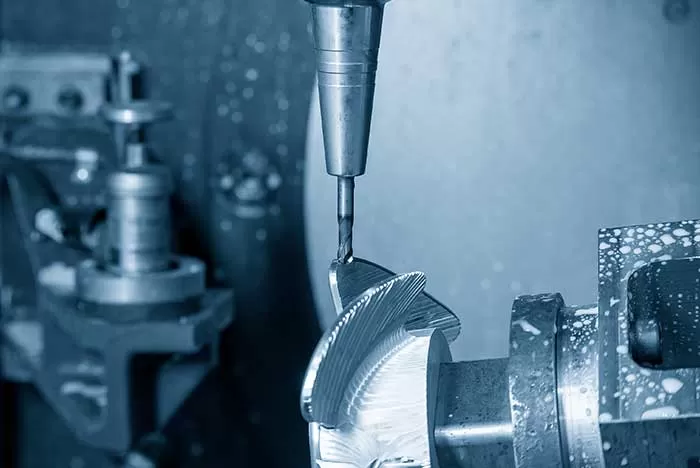
advantage
1.High wear resistance
2.Excellent rust resistance
3.Low friction coefficient
4.Good shock absorption and noise reduction effects
5.High temperature resistance
6.Good wear resistance
7.Strong corrosion resistance
8.Good antioxidant properties
9.High voltage resistance
shortcoming
1.Low hardness
2.Low elastic modulus
3.Poor fatigue resistance
4.Large proportion
5.Difficult to weld
6.Difficult to process
Application industry
1.Electronics and electrical industry: Electrical connector, switch contacts, electrical wiring terminals
2.Automotive manufacturing industry: engine piston rings, vehicle transmission parts, fuel nozzles
3.Aerospace industry: aircraft turbine engine parts, aerospace equipment connectors, aircraft control system parts
4.Manufacturing industry: various types of bearings, valves and valve accessories, pump bodies and blades
5.Chemical industry: Chemical valves and pipeline fittings, reactor and storage tank parts, mixer and agitator components
6.Chrome bronze
Chromium bronze is a material alloyed with copper and chromium, which has excellent wear resistance and corrosion resistance. Chromium bronze parts with complex geometric shapes can be manufactured.
Physical and chemical characteristics of different Chrome bronze grades
Table: Physical and Chemical Properties of Different Chromium Copper Grades
| Grade | Density (g/cm³) | Hardness (HB) | Young’s Modulus (GPa) | Thermal Conductivity (W/(m·K)) | Melting Point (°C) | Alloy Composition |
|---|---|---|---|---|---|---|
| C18000 | 8.8 | 70-90 | 120 | 73.5 | 1010 | Copper (Cu): 82-85%, Chromium (Cr): 14-16%, Tin (Sn): 1%, Zirconium (Zr): 1% |
| C18150 | 8.84 | 70-90 | 125 | 73.5 | 1025 | Copper (Cu): 79-81%, Chromium (Cr): 16-18%, Tin (Sn): 3%, Zirconium (Zr): 1% |
| C18200 | 8.82 | 70-90 | 120 | 73.5 | 1035 | Copper (Cu): 83-86%, Chromium (Cr): 13-15%, Tin (Sn): 1%, Zirconium (Zr): 1% |
| C18250 | 8.8 | 70-90 | 115 | 73.5 | 1030 | Copper (Cu): 80-82%, Chromium (Cr): 16-18%, Tin (Sn): 2%, Zirconium (Zr): 1% |
| C18600 | 8.85 | 70-90 | 125 | 73.5 | 1040 | Copper (Cu): 81-83%, Chromium (Cr): 15-17%, Tin (Sn): 2%, Zirconium (Zr): 1% |
| C18700 | 8.87 | 70-90 | 130 | 73.5 | 1050 | Copper (Cu): 78-80%, Chromium (Cr): 18-20%, Tin (Sn): 2%, Zirconium (Zr): 1% |
advantage
1.Excellent high-temperature resistance
2.Strong antioxidant properties
3.Good corrosion resistance
4.Good fatigue resistance
5.High wear resistance
6.Excellent wear resistance
7.High tensile strength
shortcoming
1.Susceptible to thermal fission
2.Not suitable for high-speed friction conditions
3.Not suitable for some strong acid and alkali environments
4.Not suitable for application scenarios with high precision requirements
Application industry
1.Aerospace industry: aerospace engine parts, aerospace equipment connectors, aerospace transmission system parts
2.Shipbuilding industry: ship propellers and propeller shafts, hull structural parts, marine valves and pipeline fittings
3.Automotive manufacturing industry: engine cylinder liners and valve seat rings, automotive transmission system parts, automotive brake system parts
4.Power industry: generator rotor and stator, transmission line connectors, power transformer parts
5.Petroleum and natural gas industry: oil drilling pipe fittings, valves and pipe joints, Oil platform structural parts
6.Chemical industry: chemical valves and pipeline accessories, reactor and storage tank parts, pump bodies and blades
7.Mechanical manufacturing industry: gears and transmission shafts, molds and mold parts, grinding and cutting tools
Comparison of copper material prices
Table: Comparison of price trends of pure copper, brass, Phosphor bronze, aluminum bronze, tin bronze and chromium bronze (unit: USD)
| year | pure copper | brass | Phosphor bronze | aluminum bronze | tin bronze | chromium bronze |
|---|---|---|---|---|---|---|
| 2018 | $6,185 | $5,920 | $6,750 | $5,380 | $7,450 | $8,200 |
| 2019 | $5,550 | $5,420 | $6,200 | $4,870 | $7,050 | $8,100 |
| 2020 | $6,400 | $5,900 | $6,700 | $5,100 | $7,200 | $8,350 |
| 2021 | $8,350 | $7,100 | $7,800 | $6,500 | $8,100 | $9,200 |
| 2022 | $9,200 | $8,500 | $8,950 | $7,800 | $9,500 | $10,000 |
| 2023 | $10,500 | $9,200 | $9,800 | $8,300 | $10,200 | $10,800 |
Copper CNC machining technology: selection
In the CNC machining of copper, there are two common technical options, namely CNC milling and CNC turning. Both of these technologies can provide high-precision and high-efficiency machining in copper material machining
CNC milling
CNC milling is a method of machining parts by fixing copper material on a workbench and using a rotating tool for cutting. CNC milling is suitable for machining complex contours, concave convex surfaces, or multiple surfaces. It can achieve high precision and surface quality, and has good machining efficiency.
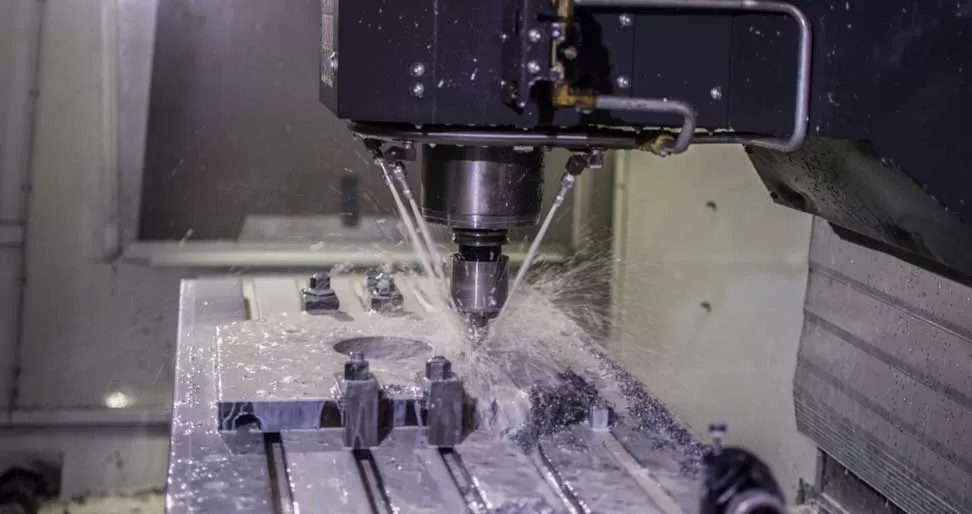
CNC turning
CNC turning is a method of machining parts by rotating the copper material onto the spindle and using a tool to cut along the axis of the workpiece. CNC turning is suitable for machining cylindrical parts, hole machining , and internal and external threads. It can achieve high precision and good surface quality, and has high machining efficiency.
conclusion
When selecting suitable machining techniques, it is necessary to consider factors such as the shape of the parts, required accuracy and surface quality, and production efficiency. If complex contour machining or multi face machining is required, CNC milling may be more suitable; For cylindrical parts or hole machining needs, CNC turning may be more suitable.
Start your copper CNC machining service now!
Do you have a precision copper parts project that requires high-quality CNC machining services to ensure every detail is flawless? At Longsheng Technology, we provide professional copper CNC machining services to meet your needs.
We have advanced CNC machining equipment and an experienced technical team, which can handle various copper materials. Whether it is simple parts or complex components, we can accurately cut, mill, and turn them to meet your requirements in shape and size.
Whether you need a single sample or mass production, we can meet your needs. Our goal is to provide you with high-quality copper CNC machining services to help you achieve project success. Contact us and let us work together to implement your design idea.
E-Mail:gloria.wu@longshengmfg.com
FAQ
Copper material is very suitable for CNC machining. It has good cutting performance and thermal conductivity, making it the preferred material in many fields. We can choose suitable copper materials for machining according to your needs.
Yes, we welcome you to provide your own design documents. We can process copper CNC based on your design documents to ensure that the final parts meet your requirements and expectations.
Copper CNC machining is applicable to various types of parts, including Machine element, electronic components, connectors, pipe fittings, etc. Whether it is small-scale customized parts or large-scale production, copper CNC machining can meet different needs.
In order to process copper CNC, you need to provide specific part drawings, CAD files, or physical samples. After confirming the machining requirements and requirements, we will design and quote the machining plan based on the information you provide.
The cost of copper CNC machining is usually determined by multiple factors, including part complexity, material cost, machining time, etc. We will evaluate the machining cost based on the information you provide and provide you with a detailed quotation.
Yes, copper CNC machining parts can undergo various surface finishing processes, such as polishing, sandblasting, electroplating, etc., to enhance their appearance and corrosion resistance.


